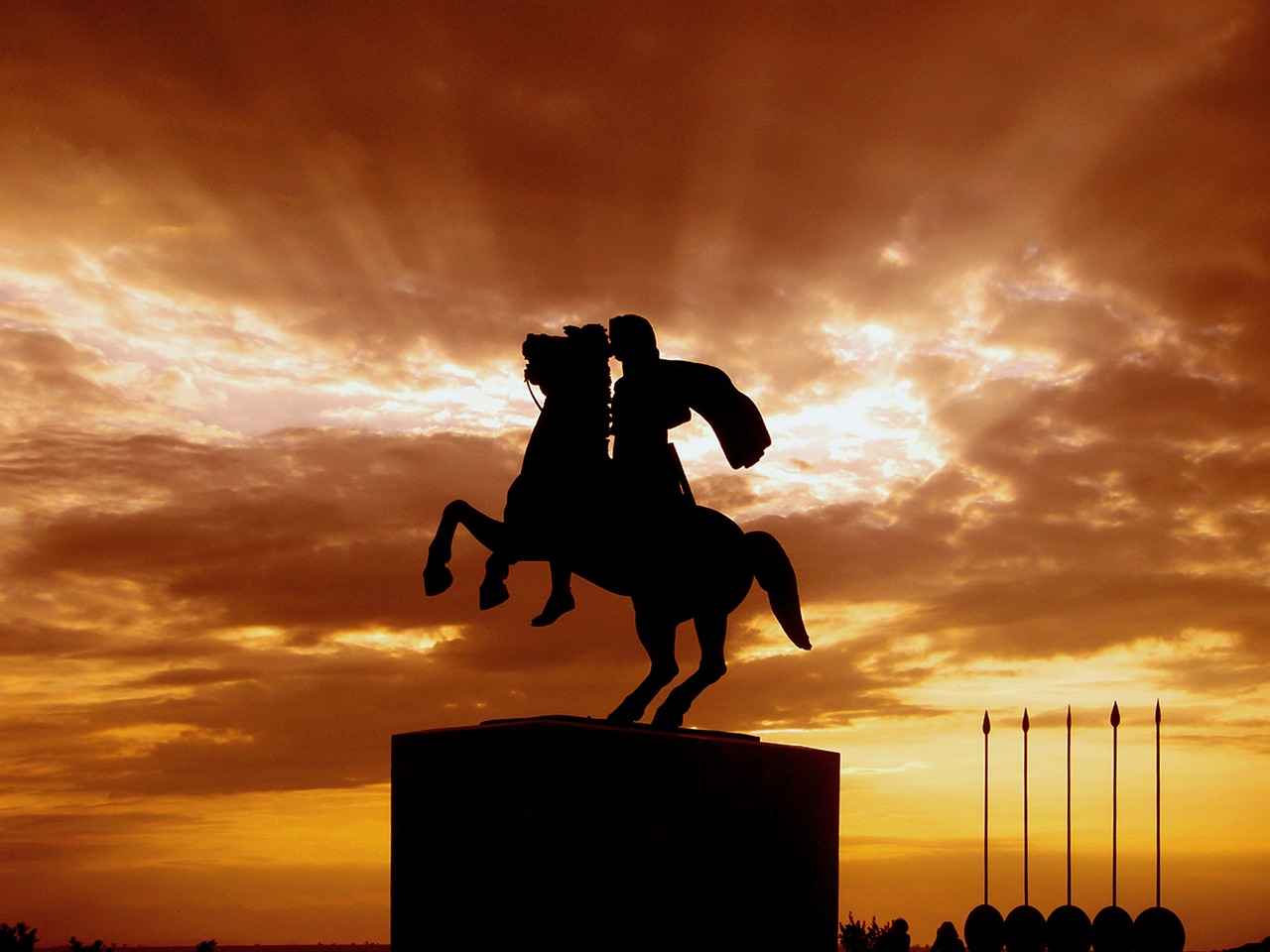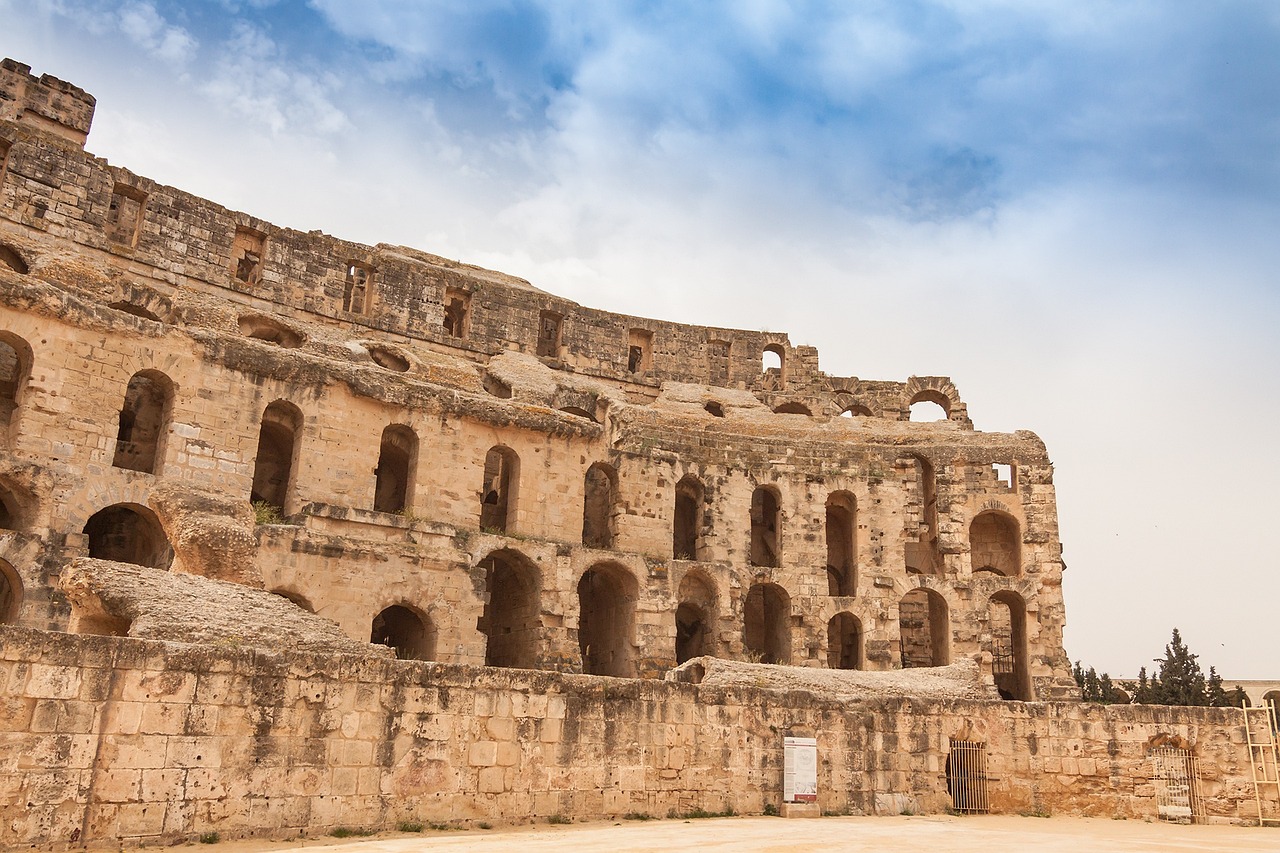The Rise and Fall of the Gupta Empire - A Historical Analysis
The Gupta Empire, one of the most influential dynasties in ancient India, rose to power through a combination of strategic alliances, military conquests, and diplomatic prowess. Founded by Sri Gupta in the early 4th century, the empire gradually expanded its territory through a series of well-planned campaigns, establishing a strong foothold in the northern regions of the subcontinent.
As the Gupta Empire entered its golden age under the reign of Chandragupta I and his successors, it witnessed a remarkable flourishing of art, literature, and scientific achievements. The era was marked by a renaissance of Indian culture, with advancements in fields such as mathematics, astronomy, and metallurgy that continue to influence the world to this day.
Economically, the Gupta Empire thrived due to its strategic location along major trade routes, fostering prosperous commercial ties with distant lands such as Rome, Southeast Asia, and China. The empire's policies promoting agriculture, trade, and craftsmanship led to unprecedented wealth and stability, fueling further growth and development.
Underpinning the Gupta Empire's success was its efficient administrative and political structure, characterized by a decentralized system that granted significant autonomy to local rulers while maintaining central authority. This balance of power enabled the Gupta rulers to govern their vast empire effectively and respond swiftly to internal and external challenges.
Religiously and culturally, the Gupta era was a period of remarkable diversity and tolerance, with rulers such as Samudragupta and Chandragupta II patronizing various faiths and promoting artistic endeavors. The empire's support for Hinduism, Buddhism, and Jainism fostered a rich tapestry of beliefs and practices that shaped the spiritual landscape of ancient India.
However, the Gupta Empire faced numerous challenges in its later years, including internal power struggles, regional revolts, and invasions by foreign forces such as the Huns. These factors, combined with economic pressures and administrative inefficiencies, eventually led to the gradual decline and fragmentation of the once-mighty empire.
Despite its eventual collapse, the Gupta Dynasty left a lasting legacy on Indian history, influencing subsequent dynasties and shaping the cultural identity of the subcontinent. The period of Gupta rule is often regarded as a golden age in Indian history, marked by unparalleled achievements in art, science, and governance that continue to inspire scholars and enthusiasts alike.
Through the lens of modern historiography, the Gupta Empire remains a subject of scholarly debate and interpretation, with historians offering varying perspectives on its significance and impact. Recent research has shed new light on this pivotal period, revealing the complex interplay of factors that contributed to both the rise and fall of the Gupta Dynasty.

Foundation of the Gupta Empire
Exploring the significant events and factors that led to the establishment and decline of the influential Gupta Empire in ancient India.
The Gupta Empire, one of the most renowned dynasties in ancient India, had its humble beginnings in the early 4th century CE. Founded by Sri Gupta, the dynasty initially ruled a small kingdom in the Magadha region. Over time, under the leadership of his successors, including Chandragupta I and Samudragupta, the empire expanded its territories through strategic alliances and military conquests.
Chandragupta I, known for his military prowess and diplomatic skills, played a crucial role in consolidating the Gupta Empire's power and influence. Through a series of successful campaigns, he extended the empire's borders, laying the foundation for a prosperous and expansive realm.
Samudragupta, often hailed as the "Napoleon of India," further expanded the Gupta Empire through his military campaigns, which not only secured the empire's frontiers but also enhanced its cultural and economic connections with neighboring regions.
Under the early Gupta rulers, the empire established a strong administrative framework, fostering stability and prosperity within its territories. This period marked the consolidation of Gupta power and the beginning of a golden age that would define the dynasty's legacy.
The Gupta Empire's foundation was built upon a combination of military conquests, strategic alliances, and efficient governance, setting the stage for its remarkable rise to prominence in ancient India.

Golden Age of the Gupta Dynasty
The Golden Age of the Gupta Dynasty marks a period of unparalleled prosperity and cultural advancement in ancient India. Under the rule of illustrious Gupta emperors, such as Chandragupta II and Kumaragupta, the empire experienced a renaissance in various fields, solidifying its status as a beacon of civilization.
One of the defining features of this era was the flourishing of art and architecture. The Gupta period witnessed the creation of magnificent sculptures, intricate temple carvings, and awe-inspiring cave paintings that showcased the artistic genius of the time. The Ajanta and Ellora caves stand as enduring testaments to the artistic mastery achieved during this period.
Furthermore, the Golden Age of the Gupta Dynasty was characterized by significant advancements in science and mathematics. Scholars like Aryabhata made groundbreaking discoveries in astronomy, trigonometry, and algebra, laying the foundation for future scientific developments. The concept of zero, a revolutionary mathematical innovation, was pioneered during this period.
Moreover, the Gupta Empire was a hub of intellectual activity, with renowned universities and centers of learning attracting scholars from far and wide. Nalanda University, a renowned seat of learning, flourished during this time, fostering a culture of academic excellence and intellectual curiosity.
Trade and commerce thrived under the Gupta reign, facilitated by well-established trade networks and a stable economy. The empire's strategic location along major trade routes enabled the flourishing of commerce, leading to increased prosperity and cultural exchange with distant lands.
Religiously, the Gupta Dynasty embraced a spirit of tolerance and patronage towards various faiths, including Hinduism, Buddhism, and Jainism. This inclusive approach fostered a climate of religious harmony and cultural diversity, allowing different traditions to coexist and flourish.
In conclusion, the Golden Age of the Gupta Dynasty represents a pinnacle of Indian civilization, characterized by artistic brilliance, scientific innovation, intellectual vibrancy, and cultural diversity. The legacy of this period continues to inspire awe and admiration, serving as a reminder of the heights that human civilization can achieve.

Economic Prosperity and Trade Networks
The Gupta Empire was renowned for its remarkable economic prosperity and well-established trade networks that played a pivotal role in its success and influence in ancient India. The economic policies implemented by the Gupta rulers fostered a flourishing economy, leading to unprecedented wealth and stability within the empire.
One of the key factors contributing to the economic prosperity of the Gupta Empire was its strategic location along major trade routes, facilitating extensive trade networks with regions both within and outside the Indian subcontinent. The empire's access to valuable resources such as spices, textiles, and precious metals further fueled its economic growth and commercial activities.
Under Gupta rule, trade flourished across various regions, including Southeast Asia, China, the Mediterranean, and the Middle East. This extensive trade network not only enriched the empire but also facilitated cultural exchanges, technological advancements, and the spread of ideas and innovations.
The Gupta Empire's economic prosperity was also supported by its efficient administrative system, which oversaw trade regulations, taxation, and infrastructure development. The establishment of well-organized marketplaces, coinage systems, and trade guilds contributed to the smooth functioning of commerce and facilitated economic transactions.
Moreover, the Gupta rulers actively promoted maritime trade, leading to the expansion of seaports and the development of naval fleets. This emphasis on maritime trade further boosted the empire's economic growth and strengthened its connections with distant regions, enhancing both commerce and cultural interactions.
Overall, the Gupta Empire's economic prosperity and extensive trade networks were instrumental in shaping its influence and significance in ancient India, laying the foundation for a period of remarkable cultural and intellectual achievements that defined the Golden Age of the Gupta Dynasty.

Administrative and Political Structure
During the reign of the Gupta Empire, the administrative and political structure played a crucial role in the governance and stability of the vast territories under their control. The empire was divided into provinces or regions known as Bhuktis, which were further subdivided into Vishayas or districts. Each district was overseen by a Vishayapati, who was responsible for maintaining law and order, collecting taxes, and ensuring the welfare of the local population.
At the top of the administrative hierarchy was the King, who held supreme authority and was assisted by a council of ministers in decision-making processes. The efficient bureaucracy of the Gupta Empire allowed for effective governance and the implementation of policies that promoted economic prosperity and social harmony.
The Gupta rulers also established a system of local self-government, where village councils known as Gramikas were responsible for resolving disputes, managing local affairs, and upholding traditional customs. This decentralized approach to governance empowered local communities and fostered a sense of participation and ownership among the populace.
In terms of political structure, the Gupta Empire was characterized by a centralized monarchy with hereditary succession. The king wielded considerable power, but the influence of regional governors and noble families also played a significant role in the political landscape. The administration was supported by a well-organized army and a network of spies to maintain control and address any potential threats to the empire's stability.
The Gupta rulers implemented policies that promoted religious tolerance, allowing for the coexistence of various faiths such as Hinduism, Buddhism, and Jainism. This inclusive approach to religion helped in fostering a sense of unity among the diverse population of the empire and contributed to social cohesion.
Overall, the administrative and political structure of the Gupta Empire was characterized by a blend of central authority and local autonomy, creating a harmonious balance that allowed for effective governance and the flourishing of art, culture, and intellectual pursuits during this golden era of Indian history.

Religious and Cultural Developments
During the reign of the Gupta Empire, religious and cultural developments played a significant role in shaping the society of ancient India. The Gupta rulers were known for their patronage of Hinduism, Buddhism, and other faiths, fostering a climate of religious tolerance and diversity. This period witnessed the construction of magnificent temples and stupas, showcasing the architectural and artistic prowess of the time.
One of the most notable cultural achievements of the Gupta era was the flourishing of literature, with scholars producing timeless works in various fields such as poetry, drama, and philosophy. The renowned Sanskrit language reached new heights of refinement, becoming the language of choice for intellectual discourse and creative expression.
Art also thrived during this period, with exquisite sculptures and paintings reflecting the aesthetic sensibilities of the time. The Gupta period is often referred to as the "Golden Age" of Indian art, with artists creating masterpieces that continue to inspire admiration and awe to this day.
Furthermore, the Gupta Empire witnessed the consolidation of diverse cultural influences, leading to a rich tapestry of traditions that blended harmoniously. This cultural synthesis gave rise to a vibrant society where ideas and innovations flourished, creating a legacy that endures in the cultural fabric of India.

Challenges and Decline of the Empire
As the Gupta Empire reached its zenith, it also faced a myriad of challenges that eventually led to its decline. Internal conflicts among the ruling elite and regional governors began to weaken the central authority of the empire. The lack of a clear succession plan after the death of powerful rulers further exacerbated the internal strife, creating a power vacuum that invited external threats.
One of the major challenges that the Gupta Empire encountered was the relentless invasions by the Huns, a nomadic warrior tribe from Central Asia. The Huns' incursions into Gupta territory not only drained the empire's resources but also disrupted trade routes and agricultural productivity, leading to economic instability and social unrest.
Moreover, the Gupta Empire faced pressure from neighboring kingdoms and regional powers that sought to expand their influence at the expense of Gupta dominance. The constant military engagements and territorial disputes drained the empire's military strength and financial reserves, making it increasingly vulnerable to external aggression.
Another significant factor contributing to the decline of the Gupta Empire was the emergence of new religious and cultural movements that challenged the traditional authority of the ruling elite. The spread of Buddhism and other heterodox beliefs eroded the Gupta rulers' legitimacy and support base, further weakening the empire from within.
Furthermore, the Gupta Empire grappled with internal rebellions and uprisings by disgruntled subjects who were disillusioned with the oppressive taxation policies and bureaucratic corruption. The growing discontent among the common people and the loss of faith in the imperial administration sowed the seeds of rebellion that ultimately hastened the empire's downfall.
In the face of these multifaceted challenges, the Gupta Empire gradually lost its grip on power and influence, leading to its eventual collapse by the early 6th century CE. The once-mighty empire that had ushered in a golden age of prosperity and cultural brilliance succumbed to the forces of internal strife, external aggression, and socio-political upheaval.

Legacy of the Gupta Dynasty
As we delve into the legacy of the Gupta Dynasty, we uncover a profound impact that resonates through the annals of Indian history. The Gupta Empire left an indelible mark on the cultural, social, and political landscape of ancient India, shaping the course of future dynasties and civilizations in the region. Through their patronage of arts, literature, and architecture, the Guptas ushered in a golden age that is revered to this day.
One of the most enduring legacies of the Gupta Dynasty lies in their promotion of Hinduism and Buddhism, fostering a rich tapestry of religious diversity and tolerance. The Gupta rulers were known for their support of religious institutions, which led to the flourishing of philosophical thought and spiritual practices during their reign. This cultural synthesis laid the foundation for the spiritual fabric of India for centuries to come.
Furthermore, the Gupta Empire's advancements in science, mathematics, and astronomy have left an indelible mark on the intellectual heritage of India. The era witnessed remarkable achievements in fields such as metallurgy, medicine, and architecture, with scholars like Aryabhata and Varahamihira making groundbreaking contributions that reverberate through the corridors of time.
Not only did the Gupta Dynasty leave a legacy of cultural and intellectual brilliance, but their administrative acumen and political stability set a benchmark for governance in ancient India. The decentralized administrative structure implemented by the Guptas allowed for local autonomy while maintaining central control, fostering a sense of unity and cohesion across the empire.
Despite the eventual decline of the Gupta Empire, its legacy endured through the patronage of art, literature, and architecture that continued to influence subsequent dynasties in India. The Gupta aesthetic style, characterized by intricate sculptures, vibrant paintings, and monumental architecture, became a hallmark of Indian artistry and craftsmanship.
In conclusion, the legacy of the Gupta Dynasty transcends mere historical chronicles; it embodies a cultural renaissance that shaped the identity of a nation. The enduring impact of the Guptas on Indian society, culture, and governance underscores their significance as one of the most illustrious dynasties in the tapestry of Indian history.

Historiography and Modern Interpretations
The study of the Gupta Empire through historiography offers a fascinating glimpse into how different scholars interpret and analyze historical events. Historians have approached the Gupta period from various perspectives, shedding light on different aspects of the empire's rise and fall. Some focus on the political achievements of the Gupta rulers, highlighting their administrative prowess and military strategies that expanded the empire's borders.
Modern interpretations of the Gupta Empire often emphasize the cultural and intellectual advancements that marked this era. Scholars delve into the patronage of arts and sciences by Gupta monarchs, showcasing the rich tapestry of literature, architecture, and scientific discoveries that flourished under their rule. The Gupta era is celebrated for its contributions to mathematics, astronomy, and literature, which continue to inspire researchers and enthusiasts worldwide.
Furthermore, historiography plays a crucial role in shaping our understanding of the Gupta Empire's legacy. By analyzing primary sources, inscriptions, and archaeological findings, historians piece together the puzzle of ancient India's history. Through a critical examination of these sources, modern scholars offer new insights and interpretations that challenge traditional narratives and provide a fresh perspective on the Gupta dynasty's impact on Indian civilization.

